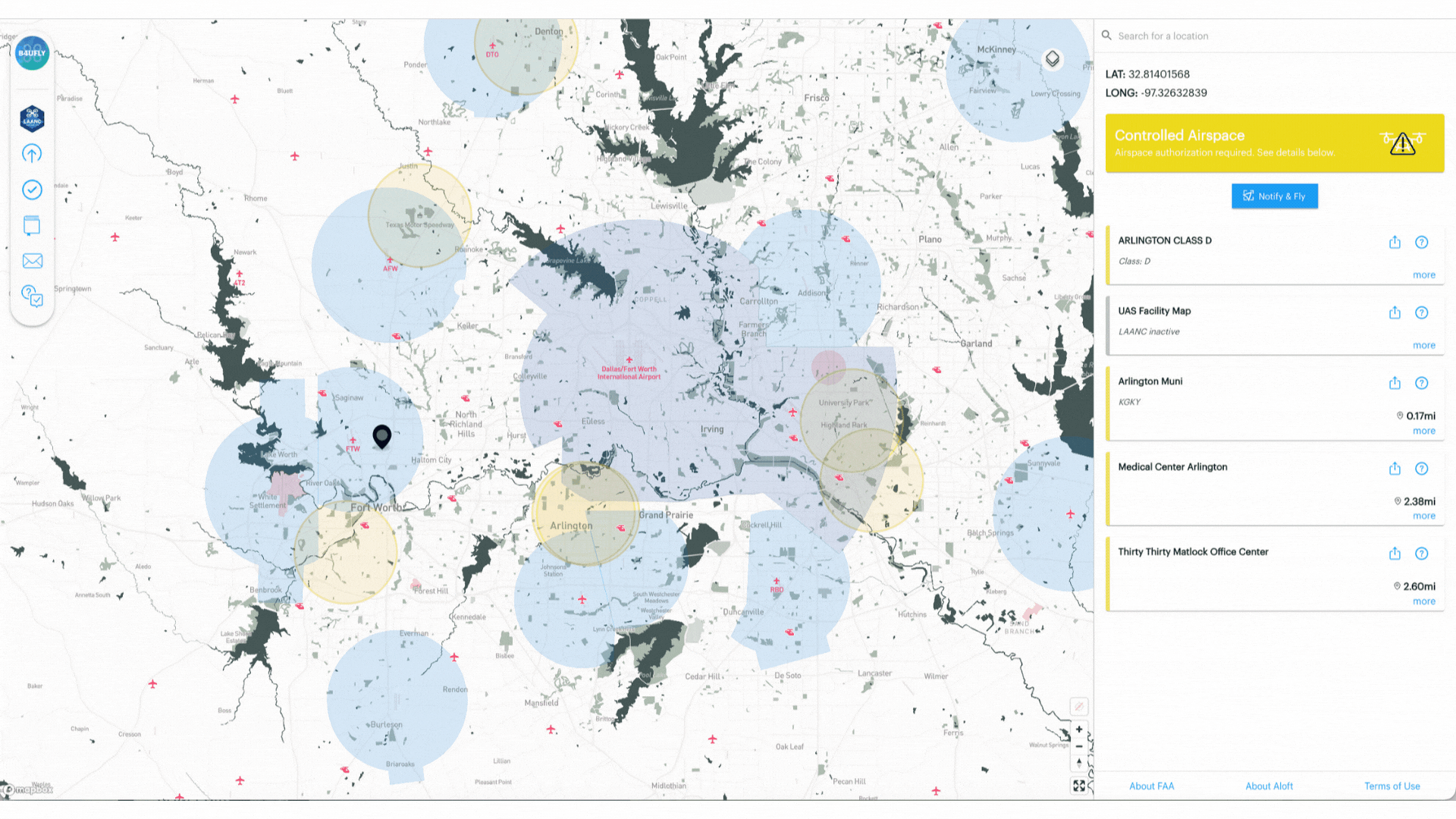Drones have been flying to the top of the radar in recent years, prompting photographers and hobbyists to take to the skies.
The DFW airspace can be pretty confusing — or as Ryan Taylor, local drone photographer and owner of Panther City Air, told us “widely considered among the most complex in the nation.”
If you’re interested in capturing incredible aerial photos like the one above, keep reading for an easy explainer that’s buzzing with pro tips about local drone regulations, no-fly zones, and the best spots to capture photos in Fort Worth.
Note: These guidelines apply to recreational drone use. If you’re looking for more information about commercial, education, or government use, refer to the full FAA regulations.
Mile-high guidelines
Flying drones — or Unmanned Aerial Systems (UAS) under 55 lbs — are regulated by the Federal Aviation Administration’s (FAA) Certificated Remote Pilots rules. Some basic guidelines include:
- Passing The Recreational UAS Safety Test
- Having current registration + Remote ID
- Keeping your drone where you can see it
- Giving way to other aircraft
- Flying at or below FAA-authorized altitudes in controlled airspace with prior authorization
- Flying at or below 400 feet in uncontrolled airspace

Check out B4UFLY’s interactive map to see controlled airspace and alerts.
Images courtesy of B4UFLY
Where can I fly?
Perhaps the most important thing to know is where you can and cannot fly your drone — particularly around airports, military bases, critical infrastructure (like manufacturing facilities and dams), and hospitals (to account for emergency helicopters).
Check out B4UFLY’s interactive webpage and app to locate uncontrolled airspace and active advisories. You can also apply for real-time authorization in controlled airspace.
Some drones have their own built-in geofencing that will keep you from flying into unauthorized airspace.
The no-nos
Taylor noted that it’s important to know what is respectful as well as legal. Not only is capturing surveillance of people or private property a Class C misdemeanor in Texas, it is also rude — and we’re not into rude.
Drones can also disturb wildlife, so you must obtain a permit to film in a Texas State Park. Check out some other helpful dos and don’ts of drone etiquette.

Aerial photography gives you “the ability to check on flooded areas or abandoned structures that might not be safe to walk around,” said Ryan Taylor.
Photo by @panther_city_air
Pro tips and photo ops
Taylor told us he got into drone photography because he liked the aerial perspective and finding a different outlook on how the city is connected.
He recommended that new photographers spend time getting comfortable with their gear, gaining experience, and learning what to do when problems arise.
“It’s a lot different than most types of terrestrial photography so if you want to learn how to get really impressive images it can take some getting used to even if you’re an experienced photographer,” he said.
His favorite places to film are the Trinity Trails north of downtown — where you can capture the skyline, Trinity River, and LaGrave Field — and Saunders Park in the Stockyards. Check out some shots on Instagram and YouTube.
Now, it’s your turn — send us your stunning aerial shots or nominate your favorite local drone photographer and we’ll share the high-flying photos in an upcoming newsletter.











